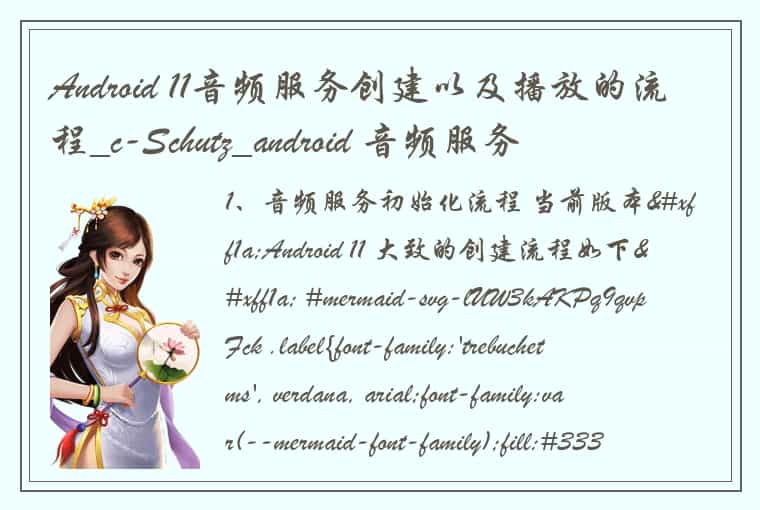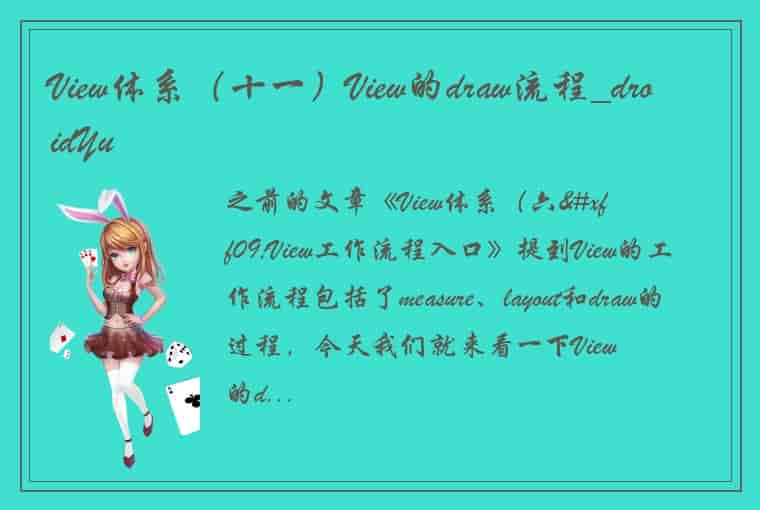目录 一、结构二、简介三、生命周期四、Service分类4.1具体分类4.2详细介绍 五、使用方法5.1本地Service5.2可通信的服务Service 一、结构 二、简介
定义:服务,是Android四大组件之一, 属于计算型组件
作用:提供 需在后台长期运行的服务
如:复杂计算、音乐播放、下载等
特点:无用户界面、在后台运行、生命周期长 三、生命周期 四、Service分类Service可按照运行地点、运行类型 、功能进行分类,具体如下:
4.1具体分类 4.2详细介绍 五、使用方法 5.1本地Service1.创建service 2.需重写父类的onCreate()、onStartCommand()、onDestroy()和onBind() 3.在主布局文件设置两个Button分别用于启动和停止Service activity_main.xml 核心代码:
<?xml version="1.0" encoding="utf-8"?> <androidx.constraintlayout.widget.ConstraintLayout xmlns:android="http://schemas.android.com/apk/res/android" xmlns:app="http://schemas.android.com/apk/res-auto" xmlns:tools="http://schemas.android.com/tools" android:layout_width="match_parent" android:layout_height="match_parent" tools:context=".MainActivity"> <Button android:id="@+id/startService" android:layout_width="wrap_content" android:layout_height="wrap_content" android:layout_centerInParent="true" android:layout_marginTop="235dp" android:text="启动服务" app:layout_constraintEnd_toEndOf="parent" app:layout_constraintStart_toStartOf="parent" app:layout_constraintTop_toTopOf="parent" /> <Button android:id="@+id/stopService" android:layout_width="wrap_content" android:layout_height="wrap_content" android:layout_below="@+id/startService" android:layout_centerInParent="true" android:layout_marginTop="38dp" android:text="停止服务" app:layout_constraintStart_toStartOf="@+id/startService" app:layout_constraintTop_toBottomOf="@+id/startService" /> </androidx.constraintlayout.widget.ConstraintLayout>4.编写Activity逻辑代码 核心代码:
public class MainActivity extends AppCompatActivity { Button startService; Button stopService; @Override protected void onCreate(Bundle savedInstanceState) { super.onCreate(savedInstanceState); setContentView(R.layout.activity_main); startService=findViewById(R.id.startService); startService.setOnClickListener(new View.OnClickListener() { @Override public void onClick(View v) { Intent startIntent = new Intent(MainActivity.this, MyService.class); //调用startService()方法-传入Intent对象,以此启动服务 startService(startIntent); } }); stopService=findViewById(R.id.stopService); stopService.setOnClickListener(new View.OnClickListener() { @Override public void onClick(View v) { Intent stopIntent = new Intent(MainActivity.this, MyService.class); //调用stopService()方法-传入Intent对象,以此停止服务 stopService(stopIntent); } }); } }5.运行结果
ps:成功打印了日志,也可以看到我们的界面没有任何的变化
5.2可通信的服务Service 上面介绍的Service是最基础的,但只能单机使用,即无法与Activity通信 所以这种方式启动服务只适用于启动以后不需要关闭的一些操作,如果我们需要在启动服务以后,改变其中某种操作的状态,就需要用到service的第二种启动方式接下来将在上面的基础用法上,增设“与Activity通信”的功能,即使用绑定Service服务(Binder类、bindService()、onBind()、unbindService()、onUnbind())1.重写方法 2.我们再看到 MyService中 这个onBind方法,我们用第二种方法启动服务,一定会回调这个onBind方法,系统就会强制我们返回一个IBinder对象,然后通过activity拿到引用 3.重写MyBinder方法 (因为IBinder接口需要重写九个方法,所以我们找一个已经实现IBinder接口的方法继承---->Binder已经实现了IBinder接口)
4.在主布局文件再设置两个Button分别用于绑定和解绑Service
核心代码:
<?xml version="1.0" encoding="utf-8"?> <androidx.constraintlayout.widget.ConstraintLayout xmlns:android="http://schemas.android.com/apk/res/android" xmlns:app="http://schemas.android.com/apk/res-auto" xmlns:tools="http://schemas.android.com/tools" android:layout_width="match_parent" android:layout_height="match_parent" tools:context=".MainActivity"> <Button android:id="@+id/startService" android:layout_width="wrap_content" android:layout_height="wrap_content" android:layout_centerInParent="true" android:layout_marginTop="235dp" android:text="启动服务" app:layout_constraintEnd_toEndOf="parent" app:layout_constraintStart_toStartOf="parent" app:layout_constraintTop_toTopOf="parent" /> <Button android:id="@+id/stopService" android:layout_width="wrap_content" android:layout_height="wrap_content" android:layout_below="@+id/startService" android:layout_centerInParent="true" android:layout_marginTop="38dp" android:text="停止服务" app:layout_constraintStart_toStartOf="@+id/startService" app:layout_constraintTop_toBottomOf="@+id/startService" /> <Button android:id="@+id/bindService" android:layout_width="wrap_content" android:layout_height="wrap_content" android:layout_below="@id/stopService" android:layout_centerInParent="true" android:layout_marginTop="39dp" android:text="绑定服务" app:layout_constraintStart_toStartOf="@+id/stopService" app:layout_constraintTop_toBottomOf="@+id/stopService" /> <Button android:id="@+id/unbindService" android:layout_width="wrap_content" android:layout_height="wrap_content" android:layout_below="@id/bindService" android:layout_centerInParent="true" android:layout_marginTop="24dp" android:text="解绑服务" app:layout_constraintStart_toStartOf="@+id/bindService" app:layout_constraintTop_toBottomOf="@+id/bindService" /> </androidx.constraintlayout.widget.ConstraintLayout>在Activity通过调用MyBinder类中的public方法来实现Activity与Service的联系 即实现了Activity指挥Service干什么Service就去干什么的功能
5.创建一个MyServiceConnection内部类并且实现两种方法 6.Activity代码
package com.hnucm.a_test12; import androidx.appcompat.app.AppCompatActivity; import android.content.ComponentName; import android.content.Intent; import android.content.ServiceConnection; import android.os.Bundle; import android.os.IBinder; import android.view.View; import android.widget.Button; public class MainActivity extends AppCompatActivity { Button startService; Button stopService; Button bindService; Button unbindService; MyService.MyBinder myBinder; ServiceConnection connection=new MyServiceConnection(); public class MyServiceConnection implements ServiceConnection{ @Override public void onServiceConnected(ComponentName name, IBinder service) { myBinder = (MyService.MyBinder) service; //在Activity调用Service类的方法 myBinder.service_connect_Activity(); } @Override public void onServiceDisconnected(ComponentName name) { } } @Override protected void onCreate(Bundle savedInstanceState) { super.onCreate(savedInstanceState); setContentView(R.layout.activity_main); startService=findViewById(R.id.startService); startService.setOnClickListener(new View.OnClickListener() { @Override public void onClick(View v) { Intent startIntent = new Intent(MainActivity.this, MyService.class); //调用startService()方法-传入Intent对象,以此启动服务 startService(startIntent); } }); stopService=findViewById(R.id.stopService); stopService.setOnClickListener(new View.OnClickListener() { @Override public void onClick(View v) { Intent stopIntent = new Intent(MainActivity.this, MyService.class); //调用stopService()方法-传入Intent对象,以此停止服务 stopService(stopIntent); } }); bindService=findViewById(R.id.bindService); bindService.setOnClickListener(new View.OnClickListener() { @Override public void onClick(View v) { //构建绑定服务的Intent对象 Intent bindIntent = new Intent(MainActivity.this, MyService.class); //调用bindService()方法,以此停止服务 bindService(bindIntent,connection,BIND_AUTO_CREATE); //参数说明 //第一个参数:Intent对象 //第二个参数:上面创建的Serviceconnection实例 //第三个参数:标志位 //这里传入BIND_AUTO_CREATE表示在Activity和Service建立关联后自动创建Service //这会使得MyService中的onCreate()方法得到执行,但onStartCommand()方法不会执行 } }); unbindService=findViewById(R.id.unbindService); unbindService.setOnClickListener(new View.OnClickListener() { @Override public void onClick(View v) { unbindService(connection); } }); } }7.运行结果
总结:在activity里面,有些与ui无关的操作,我们可以把它放到service里面来进行,或者是一些需要在后台长期运行的服务,都可以放到service里面来进行,service有两种启动方式,如果对service里面的操作不需要进一步修改,就可以用第一种方法,也比较简单,如果需要进一步改变操作的状态,就需要用到第二种方法 ,然后我们通过service里面的onBind方法,返回的IBinder接口 ,我们拿到接口以后,就可以对它进行操作,但是接口本身里面是没有任何操作的,我们需要通过他的一个实现类,也就是上面的MyBinder,我们把需要控制的地方写到中间类MyBinder中,通过这个类来进行操作。
 1.本站遵循行业规范,任何转载的稿件都会明确标注作者和来源;2.本站的原创文章,会注明原创字样,如未注明都非原创,如有侵权请联系删除!;3.作者投稿可能会经我们编辑修改或补充;4.本站不提供任何储存功能只提供收集或者投稿人的网盘链接。 1.本站遵循行业规范,任何转载的稿件都会明确标注作者和来源;2.本站的原创文章,会注明原创字样,如未注明都非原创,如有侵权请联系删除!;3.作者投稿可能会经我们编辑修改或补充;4.本站不提供任何储存功能只提供收集或者投稿人的网盘链接。 |




